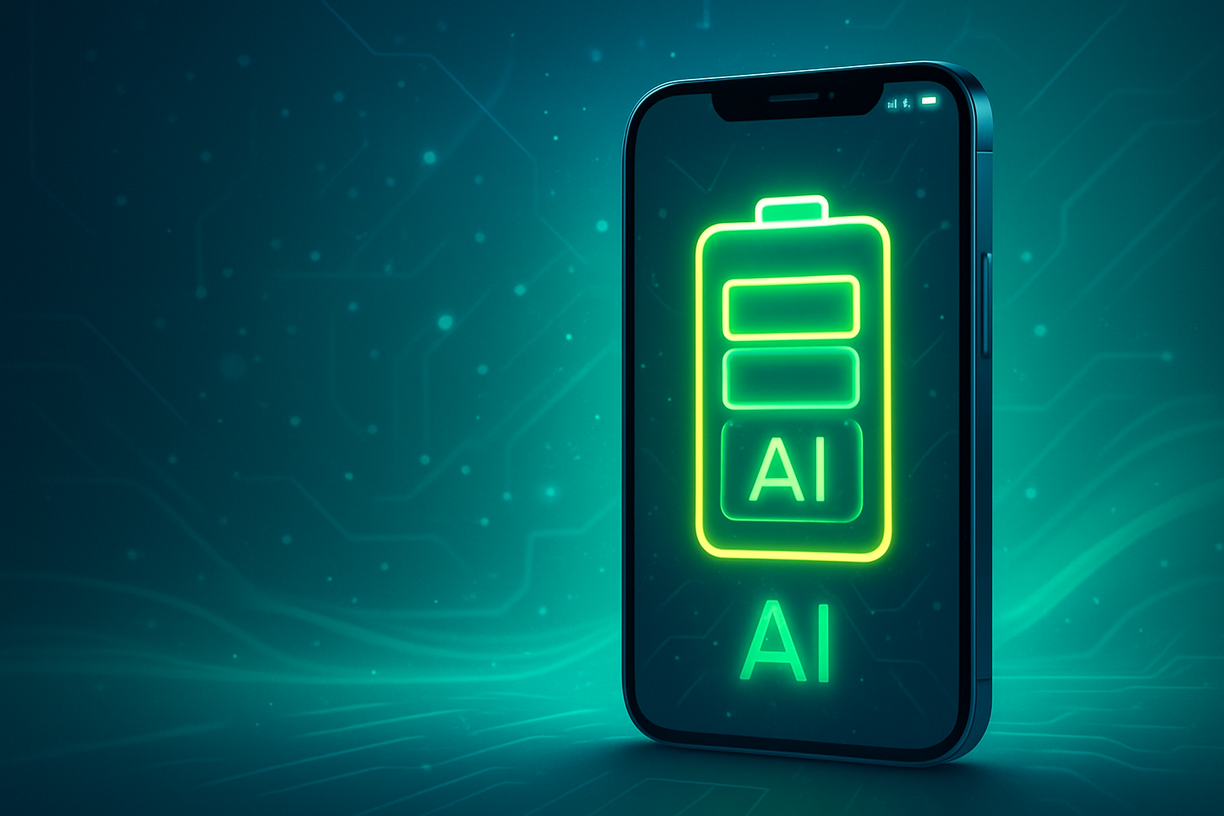The Quest for Longer iPhone Battery Life
In our increasingly connected world, our smartphones have become indispensable companions. From navigating our daily commutes to capturing life’s fleeting moments, staying in touch with loved ones, and managing our professional lives, the iPhone is at the heart of it all. Yet, despite their incredible advancements, one persistent challenge continues to plague even the most dedicated Apple enthusiasts: battery life. The dreaded low battery notification, the constant search for a charging outlet, and the anxiety of a dying phone in the middle of a crucial task are experiences far too familiar to us all.
Imagine a world where your iPhone effortlessly keeps pace with your busiest days, where you can leave your charger behind without a second thought, and where your device remains a reliable lifeline from dawn till dusk. This isn’t a distant dream; with the advent of iOS 26, Apple is promising a significant leap forward in iPhone battery longevity, thanks to a groundbreaking new feature: Adaptive Power Mode.
This isn’t just another incremental update; it’s a fundamental shift in how your iPhone manages its energy, leveraging the power of artificial intelligence to intelligently optimize performance and extend your device’s uptime. But what exactly is this Adaptive Power Mode? How does it work its magic? And, perhaps most importantly for many, which iPhones will actually benefit from this revolutionary upgrade? In this comprehensive guide, we’ll delve deep into the intricacies of iOS 26’s Adaptive Power Mode, exploring its core functionalities, identifying the compatible iPhone models, examining its real-world impact on your daily usage, and providing insights into how you can harness its full potential. Join us as we uncover the secrets to unlocking truly all-day iPhone power.
What is Adaptive Power Mode in iOS 26?
For years, iPhone users have relied on the familiar Low Power Mode, a feature designed to conserve battery life by reducing background app refresh, automatic downloads, and visual effects when your battery dips below 20%. While effective in a pinch, Low Power Mode is a blunt instrument, making broad changes across the system. Enter iOS 26’s Adaptive Power Mode, a sophisticated, AI-driven evolution of battery management that promises a more intelligent and less intrusive approach to extending your iPhone’s endurance.
At its core, Adaptive Power Mode is a proactive battery-saving feature that leverages Apple Intelligence (AI) to learn your unique usage patterns. Unlike Low Power Mode, which is reactive and kicks in at a specific battery percentage, Adaptive Power Mode is always on, working silently in the background to anticipate and optimize your iPhone’s energy consumption. It’s designed to make “small performance adjustments” that are barely noticeable to the user, yet cumulatively contribute to significant battery life improvements.
How does it achieve this? The AI continuously monitors your app usage, screen time, network activity, and even your location to understand when and how you use your device. For instance, if you’re browsing social media, it might subtly lower screen brightness or reduce the refresh rate in areas where it won’t impact your experience. If you’re not actively using an app, it might temporarily restrict its background activities more aggressively than usual, without completely shutting it down. Apple describes it as allowing “some activities to take a little longer”, implying a nuanced approach to resource allocation.
This intelligent optimization means that Adaptive Power Mode doesn’t just cut corners; it learns where and when to optimize without compromising the fluidity of your iPhone experience. It’s a stark contrast to the all-or-nothing approach of Low Power Mode, which can sometimes make your iPhone feel sluggish. With Adaptive Power Mode, the goal is to provide a seamless, extended battery experience that adapts to your needs, rather than forcing you to adapt to its limitations. It’s Apple’s answer to the perennial question: how can we give users more battery life without them even noticing the changes? The answer, it seems, lies in smart, predictive AI.
Which iPhones Get the iOS 26 Adaptive Power Mode?
This is where the rubber meets the road for many iPhone users. While iOS 26 itself is compatible with a relatively broad range of devices, extending to the iPhone 11 series and newer, the revolutionary Adaptive Power Mode is a more exclusive affair. This advanced, AI-powered battery-saving feature is not available on all iPhones capable of running iOS 26. Instead, it is specifically designed to leverage the cutting-edge hardware capabilities of Apple’s latest processors, particularly those with advanced Neural Engines essential for Apple Intelligence .
As confirmed by various reports and Apple’s own developer beta documentation, Adaptive Power Mode is exclusively available on the following iPhone models:
•iPhone 15 Pro
•iPhone 15 Pro Max
•iPhone 16
•iPhone 16 Plus
•iPhone 16 Pro
•iPhone 16 Pro Max
This means that if you own an iPhone 14, iPhone 13, iPhone 12, or even an iPhone 11, while you will be able to update to iOS 26 and enjoy many of its new features, you will unfortunately miss out on the Adaptive Power Mode. This limitation stems from the fact that the AI-driven optimizations require the robust processing power and dedicated AI capabilities found in the A17 Pro chip (in the iPhone 15 Pro and Pro Max) and subsequent generations of Apple Silicon (expected in the iPhone 16 series) .
For users with older iPhones, this news might come as a disappointment. It highlights Apple’s strategy of tying advanced software features to its newest hardware, encouraging upgrades. While the existing Low Power Mode will still be available for all compatible iOS 26 devices, it won’t offer the same intelligent, seamless, and proactive battery management that Adaptive Power Mode promises. This distinction underscores the growing importance of on-device AI capabilities in unlocking the full potential of future iOS features.
The Real-World Impact: What to Expect from Adaptive Power Mode
The promise of a “huge battery life upgrade” with iOS 26’s Adaptive Power Mode is exciting, but what does it truly mean for your daily iPhone usage? While precise, quantifiable data from extensive real-world testing is still emerging from the developer beta phase, early insights and Apple’s descriptions paint a clear picture of what users can expect.
Unlike traditional battery-saving methods that often involve noticeable compromises in performance or functionality, Adaptive Power Mode is designed to be largely invisible. The “small performance adjustments” it makes are intended to be so subtle that they don’t disrupt your user experience. This could include imperceptible dips in screen brightness in certain lighting conditions, slightly delayed background app refreshes when you’re not actively using them, or optimized network activity during periods of low usage. The goal is to eke out extra hours of battery life without making your iPhone feel sluggish or unresponsive.
Consider a scenario where you’re commuting and intermittently checking emails or social media. Adaptive Power Mode might intelligently scale back non-essential background processes or slightly reduce display intensity during these brief interactions, conserving power without you even realizing it. This contrasts sharply with Low Power Mode, which, while effective, can noticeably limit your iPhone’s capabilities by pausing downloads, reducing visual effects, and throttling CPU performance.
Expert insights suggest that the real impact of Adaptive Power Mode will be felt over the course of a full day. Instead of seeing a dramatic, immediate jump in battery percentage, users are more likely to experience a gradual extension of their iPhone’s uptime, allowing them to comfortably get through a busy day without needing to reach for a charger. This is particularly beneficial for power users or those who frequently find themselves away from charging points.
While Apple has not yet provided specific percentage improvements, the underlying AI and machine learning capabilities suggest that the effectiveness of Adaptive Power Mode will improve over time as it learns individual user habits. This personalized optimization is a key differentiator, making the battery-saving efforts more efficient and tailored than ever before. The true measure of its success will be how many users find themselves ending their day with more battery life than they’re accustomed to, without having to actively manage settings or endure performance sacrifices.
How to Enable and Customize Adaptive Power Mode in iOS 26
One of the most appealing aspects of iOS 26’s Adaptive Power Mode is its seamless integration and ease of use. Unlike the manual toggling required for Low Power Mode, Adaptive Power Mode is designed to be a set-it-and-forget-it feature, leveraging its AI capabilities to work intelligently in the background. However, for those who prefer a more hands-on approach, Apple typically provides options for managing such features within the Settings app.
While the exact pathway and customization options might see minor tweaks before the final public release of iOS 26, based on developer beta insights and Apple’s historical approach to battery management features, here’s what you can generally expect:
Enabling Adaptive Power Mode:
1.Update to iOS 26: First and foremost, ensure your compatible iPhone (iPhone 15 Pro, iPhone 16 series, or newer) is updated to iOS 26. This feature is a core component of the new operating system and will not be available on older iOS versions.
2.Navigate to Battery Settings: Open the Settings app on your iPhone. Scroll down and tap on Battery.
3.Locate Adaptive Power Mode: Within the Battery settings, you should find a new section or toggle specifically for Adaptive Power Mode. It’s anticipated that this feature will be enabled by default for eligible devices, given its intelligent and non-intrusive nature.
4.Toggle On/Off (if available): If it’s not already on, or if you wish to temporarily disable it, there will likely be a simple toggle switch to activate or deactivate Adaptive Power Mode.
Customization and Monitoring:
While Adaptive Power Mode is largely automated, Apple often provides users with transparency and some level of control over intelligent features. Here are potential customization and monitoring aspects:
•Battery Health & Charging: Within the Battery settings, you’ll continue to find detailed information about your iPhone’s battery health, including maximum capacity and peak performance capability. Adaptive Power Mode works in conjunction with features like Optimized Battery Charging to further extend the overall lifespan of your battery.
•Activity Monitoring: Apple may offer insights into how Adaptive Power Mode is impacting your battery usage. This could be through updated battery usage graphs that show periods where Adaptive Power Mode was active and its estimated savings, or through specific notifications about its optimizations.
•App-Specific Controls (Less Likely for Core Feature): While unlikely for a system-wide, AI-driven feature like Adaptive Power Mode, some users might hope for app-specific controls. However, given its design to make subtle, system-level adjustments, granular control over individual apps within Adaptive Power Mode is less probable. The AI is designed to learn and optimize across your entire usage pattern.
For most users, the beauty of Adaptive Power Mode will be its ability to work silently and effectively in the background, requiring minimal intervention. However, knowing where to find its settings and how to monitor its impact can provide peace of mind and help you understand the intelligent optimizations happening behind the scenes to keep your iPhone powered throughout the day.
The Future of iPhone Battery: What’s Next?
Adaptive Power Mode in iOS 26 is a significant step, but it’s by no means the final frontier in Apple’s quest for superior iPhone battery life. The trajectory of smartphone technology suggests a multi-pronged approach to power management, combining hardware advancements, software intelligence, and perhaps even entirely new energy solutions.
One key area of continuous innovation is battery chemistry and design. While lithium-ion batteries have been the standard for years, research into solid-state batteries, silicon anodes, and other advanced materials promises higher energy density, faster charging, and longer lifespans. Apple, with its deep pockets and commitment to innovation, is undoubtedly investing heavily in these areas. Imagine an iPhone that not only lasts for days on a single charge but also maintains its battery health for many years, significantly reducing the need for frequent battery replacements.
Beyond the physical battery, chip efficiency remains paramount. Each new generation of Apple Silicon (A-series and M-series chips) brings not only more processing power but also remarkable improvements in power efficiency. This relentless pursuit of efficiency at the silicon level means that even with more demanding tasks and advanced features, the underlying hardware consumes less power, directly translating to better battery life. Future chips will likely integrate even more specialized AI accelerators, further enhancing the capabilities of features like Adaptive Power Mode.
Further AI integration will also play a crucial role. Adaptive Power Mode is just the beginning. Future iterations of iOS could see AI managing power at an even more granular level, learning not just your daily habits but also predicting your needs based on context. For example, your iPhone might learn that you always listen to music on your commute home and pre-emptively optimize background processes to ensure uninterrupted playback, or it might intelligently manage cellular vs. Wi-Fi usage based on your location and network quality. AI could also provide more personalized and actionable insights into your battery usage, helping you understand and modify your habits for optimal performance.
We might also see advancements in wireless charging and alternative power sources. While wireless charging is convenient, it’s not always the most efficient. Future developments could include faster, more efficient wireless charging, or even long-range wireless power delivery that could trickle-charge your device throughout the day without needing to be placed on a pad. Although still in early stages, concepts like solar charging integration or kinetic energy harvesting could one day contribute to supplementary power, making the iPhone truly self-sufficient.
Ultimately, the future of iPhone battery life is a holistic one, where hardware, software, and artificial intelligence work in concert to deliver an experience where battery anxiety becomes a relic of the past. Adaptive Power Mode is a strong indicator of Apple’s direction: smart, invisible, and constantly evolving optimization that ensures your iPhone is always ready when you are.
Conclusion: A Step Towards All-Day Power
iOS 26 marks a pivotal moment in Apple’s ongoing commitment to enhancing the iPhone user experience, particularly concerning one of its most critical aspects: battery life. The introduction of Adaptive Power Mode is not merely an incremental update; it represents a sophisticated, AI-driven leap forward in intelligent power management. By leveraging the advanced capabilities of Apple Intelligence, this feature promises to deliver a truly seamless and extended battery experience, adapting to your unique usage patterns without compromising performance.
For owners of the iPhone 15 Pro and the upcoming iPhone 16 series, Adaptive Power Mode offers a compelling reason to embrace iOS 26. It signifies a future where battery anxiety becomes a distant memory, replaced by the confidence that your device will keep pace with your demanding day. While the exclusivity of this feature to newer, AI-capable hardware might be a point of contention for some, it underscores Apple’s vision for integrating artificial intelligence deeply into the core functionality of its devices.
The journey towards truly all-day iPhone power is a continuous one, driven by innovations in battery technology, chip efficiency, and increasingly, artificial intelligence. Adaptive Power Mode is a testament to this evolution, offering a glimpse into a future where your iPhone doesn’t just last longer, but intelligently manages its energy to serve you better. As we move forward, we can anticipate even more sophisticated AI-powered optimizations, further blurring the lines between hardware and software to deliver an unparalleled mobile experience. So, update your eligible iPhone to iOS 26, embrace the Adaptive Power Mode, and rediscover the freedom of a phone that truly lasts.


